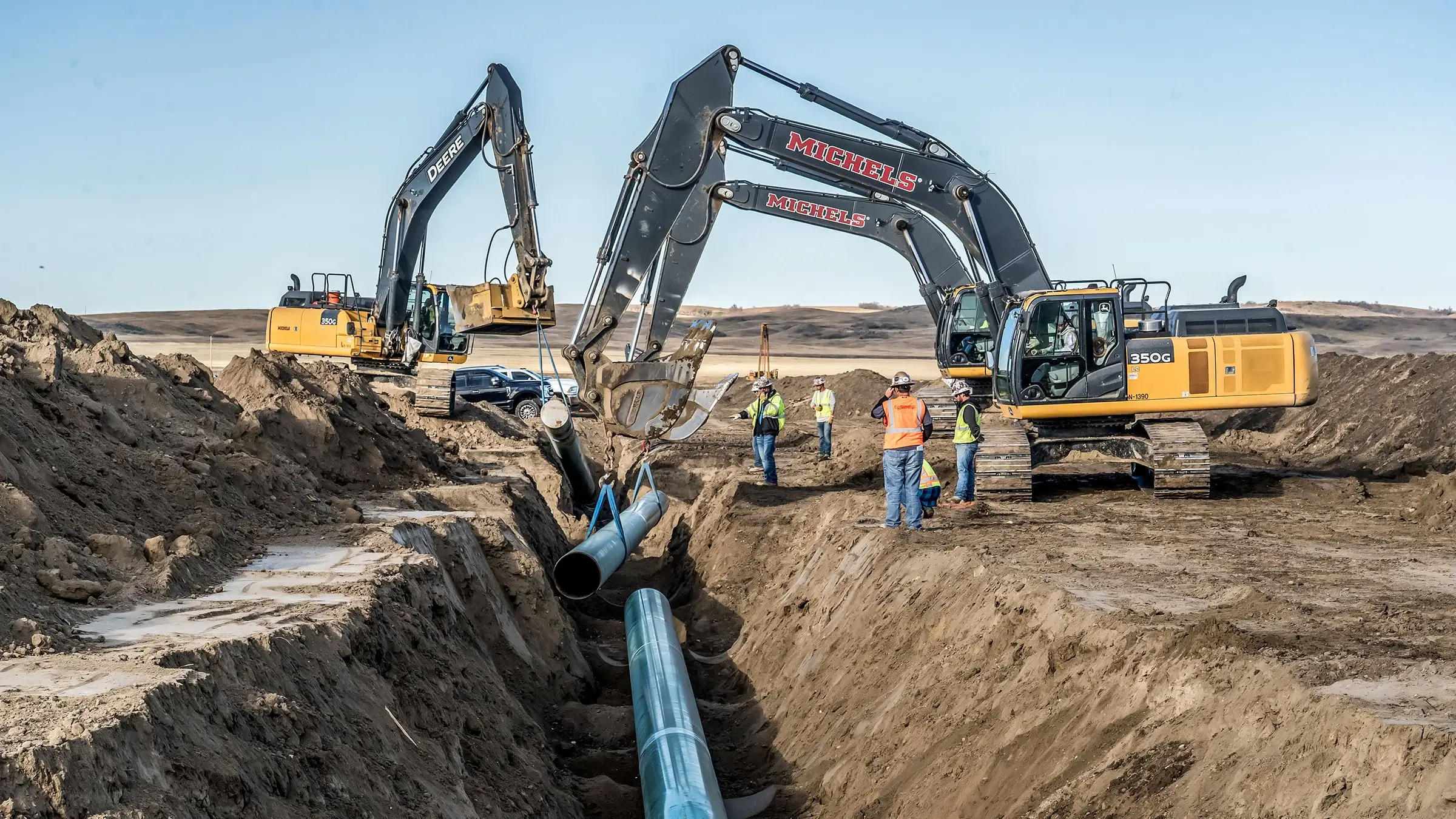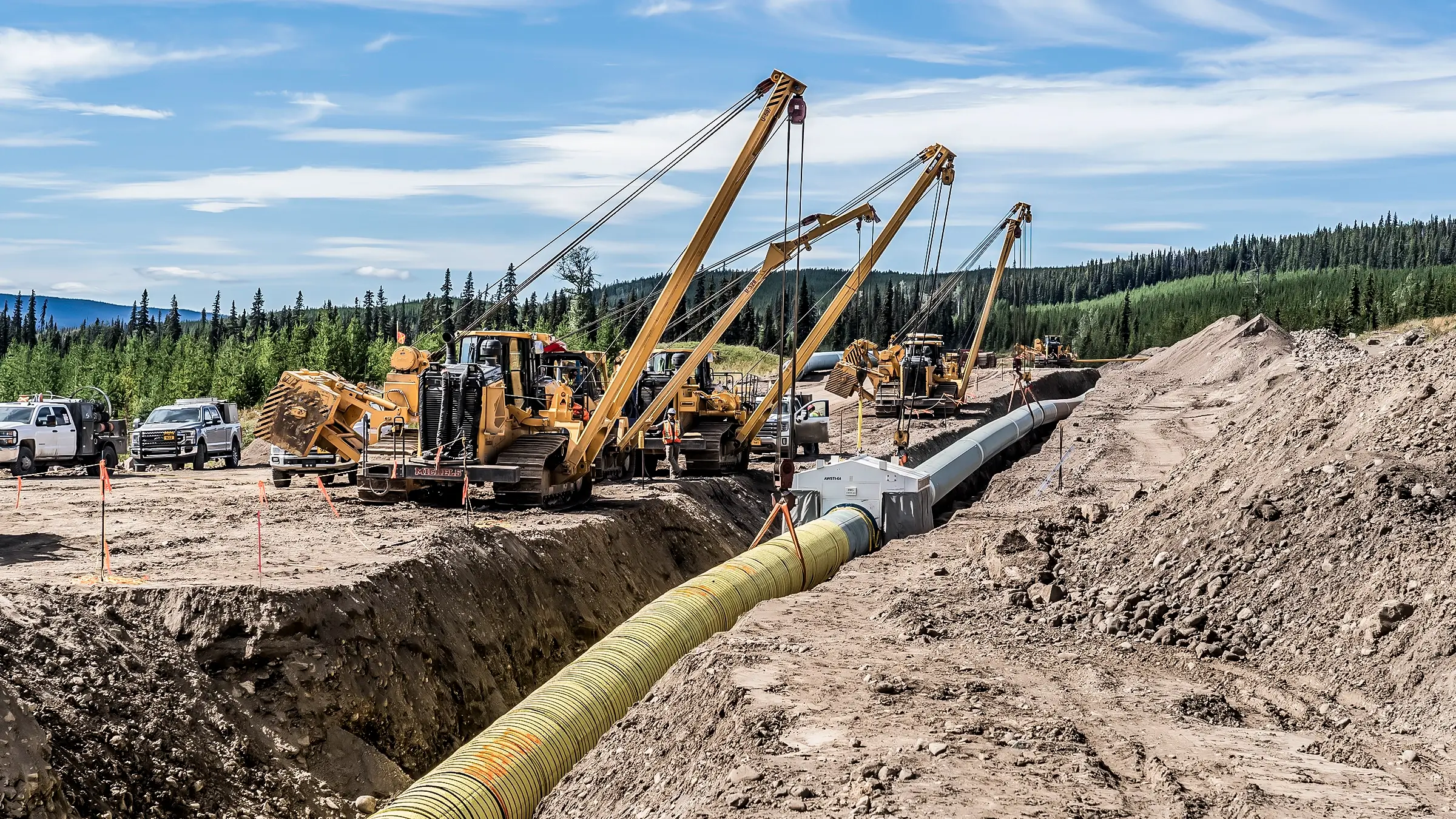Insider Tips for Safer Pipe Joining by Creek Pipe roustabout Crews
Understanding the Essentials of Pipes Installation: What You Need to Find Out About the Refine
Correct pipe installation is essential for any plumbing system. It requires careful consideration of various elements, including material choice and adherence to regional guidelines. A tactical layout can avoid concerns like pressure loss, while the right tools assure efficient signing up with strategies. Nevertheless, even experienced installers can make common blunders. Understanding these essentials can lead to a more reliable and sturdy system, motivating a better take a look at the essential elements entailed in the process.
Selecting the Right Products for Pipe Installation
When taking into consideration pipe installation, the option of proper materials is necessary to making sure longevity and performance. Various products are offered, each offering distinct advantages and factors to consider. For instance, PVC pipelines are lightweight, immune to deterioration, and economical, making them excellent for property plumbing. Conversely, copper pipelines, understood for their longevity and capacity to stand up to heats, are often preferred for home heating systems.Additionally, galvanized steel pipes supply stamina and toughness, suitable for sturdy applications, although they are vulnerable to rust over time.For below ground installations, polyethylene pipelines are preferred because of their adaptability and resistance to tension fracturing. Proper material choice depends upon the particular needs of the project, including stress ratings, temperature variants, and the chemical nature of the liquids being carried - Creek Pipe reviews. Inevitably, informed options pertaining to pipe products contribute considerably to the total success and durability of pipes systems
Understanding Local Structure Codes and Regulations
Exactly how can recognizing local building regulations and policies influence pipe installation? Experience with these codes is important for ensuring that pipe setups are safe, certified, and effective. Neighborhood building regulations lay out specific requirements regarding products, installation strategies, and precaution, which need to be stuck to to avoid possible lawful concerns and pricey fines.Failure to abide can lead to evaluations being fallen short, delays in task conclusion, or perhaps mandated removal of improperly mounted pipelines. Furthermore, comprehending zoning regulations and policies can affect the sort of products permitted, as well as the techniques made use of for installation.Contractors and homeowners alike need to invest time in examining regional laws before starting any installation project. This aggressive method not only advertises security but additionally improves the overall top quality and durability of the pipes system, ultimately cultivating long-lasting functionality and satisfaction.
Preparation Your Pipe Layout and Layout
Appropriate planning of pipe format and design is essential for attaining an effective plumbing system. This procedure starts with examining the particular requirements of the area, thinking about the area of components and devices. Accurate dimensions guarantee that pipes are correctly transmitted, lessening bends and turns that can cause push loss.Consideration of the circulation rates and the sorts of materials used is vital, as different materials have varying durability and compatibility with pipes systems. In addition, the developer ought to represent future expansions or alterations to the layout, allowing for versatility in case of renovations.Efficient water drainage and ventilation are likewise substantial components of the style, as they stop clogs and assure correct waste removal. Ultimately, collaboration with regional building regulations assures compliance and safety and security, which is critical in any type of pipes installation task.
Vital Devices and Tools for Installation
Effective pipe installation rests on having the right tools and equipment available. Vital devices consist of pipe cutters for clean cuts, wrenches for tightening fittings, and pliers for gripping and turning pipes. Furthermore, a level assurances pipes are set up uniformly, while a gauging tape help in attaining specific lengths.For details materials, a soldering iron may be required for copper pipes, while a PVC cutter is crucial for plastic alternatives. Security tools, such as handwear covers and safety glasses, shields installers from potential threats during the process.A pipe bender can be especially helpful for developing smooth contours without endangering honesty, while a torque wrench warranties that links are safeguarded to the manufacturer's specifications.Having these tools easily offered not only assists in a smoother installation process Recommended Site however additionally adds to the total toughness and performance of the pipes system. Appropriate equipment is critical in attaining lasting outcomes.
Strategies for Appropriate Pipe Joining and Securing
Achieving a safe and secure and leak-free connection in between pipes calls for cautious attention to signing up with and sealing strategies. Different approaches exist, each fit to different pipe products and applications (Creek Pipe Texas oilfield). Welding is commonly used for steel pipelines, ensuring robust links with heat fusion. In contrast, plastic pipes take advantage of solvent concrete or blend welding, developing strong, permanent bonds.Threaded links prevail in both metal and plastic piping, needing specific alignment and the usage of ideal sealants, such as Teflon tape or pipe dope, to avoid leaks. Compression fittings use another option, where mechanical stress safeguards the pipes with each other, making them conveniently disassembled for maintenance.Regardless of the technique picked, proper prep work is crucial. This includes cleaning pipe ends and ensuring they are devoid of debris. Executing these methods faithfully will boost the longevity and dependability of the pipe system, eventually adding to its efficient performance
Common Mistakes to Avoid During Installation
During pipe installation, avoiding common mistakes is essential for guaranteeing a trusted and reliable system. One constant mistake is falling short to gauge and reduce pipes precisely, which can result in inappropriate installations and leakages. In addition, disregarding look at this website to examine the compatibility of products can lead to rust or other damages gradually. Incorrectly securing joints and connections can likewise produce powerlessness in the system, triggering possible failures.Another common mistake is neglecting the significance of slope and drainage; pipes should be set up at the appropriate angle to help with correct circulation. Inadequate support for pipes can lead to drooping and stress, affecting the integrity of the system. Ultimately, neglecting regional codes and guidelines can lead to pricey rework and safety and security hazards. By understanding these challenges, installers can substantially improve the toughness and efficiency of pipe systems.
Upkeep Tips for Long-lasting Pipe Solutions
To assure the longevity of pipe systems, regular assessments and cleansing are important methods. These measures assist recognize potential issues before they intensify right into significant problems. Additionally, utilizing appropriate insulation strategies can better safeguard pipes from temperature level variations and ecological factors.
Routine Examinations and Cleaning
Normal inspections and cleaning are important for maintaining the durability and efficiency of pipe systems. Regularly analyzing pipes for indicators of corrosion, leakages, or obstructions can aid determine potential concerns prior to they escalate right into costly fixings. Cleaning pipelines occasionally gets rid of build-up that can restrict flow and promote deterioration. It is advisable to set up examinations at the very least as soon as a year, yet a lot more regular checks may be essential in high-usage settings. Using expert services for comprehensive cleaning assurances that all debris is effectively removed. Furthermore, keeping documents of inspections and maintenance tasks aids in tracking the system's health in time - Creek Pipe near me. By prioritizing these practices, home proprietors can boost the integrity and lifespan of their pipe systems
Correct Insulation Methods
Reliable insulation techniques play an essential role in preserving the effectiveness and durability of pipe systems. Proper insulation reduces heat loss in hot water pipelines and prevents cold in chilly water pipes, substantially minimizing energy expenses and potential damages. Typical products utilized for insulation consist of fiberglass, foam, and rubber, each offering differing degrees of thermal resistance. It is vital to assure that insulation is applied evenly, covering all exposed areas without voids. Additionally, protecting insulation with ideal fasteners assists keep its position and efficiency with time. Regular examinations should be carried out to recognize damage, guaranteeing timely substitutes. By executing these methods, pipe systems can run efficiently and have an extended service life, inevitably profiting both the setting and the property owner.

Frequently Asked Concerns
Exactly how Do I Determine the Appropriate Pipe Dimension for My Project?
Figuring out the appropriate pipe dimension includes evaluating the task's circulation needs, stress requirements, and the kind of liquid being moved. Consulting layout criteria and carrying out computations guarantees perfect performance and performance in the installation procedure.
What Are the Environmental Impacts of Various Pipe Products?
Can I Mount Pipes Myself or Should I Work with a Specialist?
The inquiry of whether to mount pipelines independently or work with a specialist often depends on the person's ability level and job intricacy. A specialist might assure conformity with laws and decrease prospective lasting problems.

How Much Time Can I Anticipate My Pipe Installation to Last?
The long life of pipe installation navigate here varies significantly, generally lasting 20 to 100 years, depending on materials, installation top quality, and upkeep. Routine assessments and appropriate care can enhance durability and protect against early failures.

What Are the Indications of a Failing Pipe System?
Indications of a stopping working pipe system consist of regular leakages, unusual water pressure modifications, tarnished water, mold and mildew development, and relentless moisture. House owners must keep an eye on these indications to stay clear of pricey damage and guarantee prompt repair work are made.